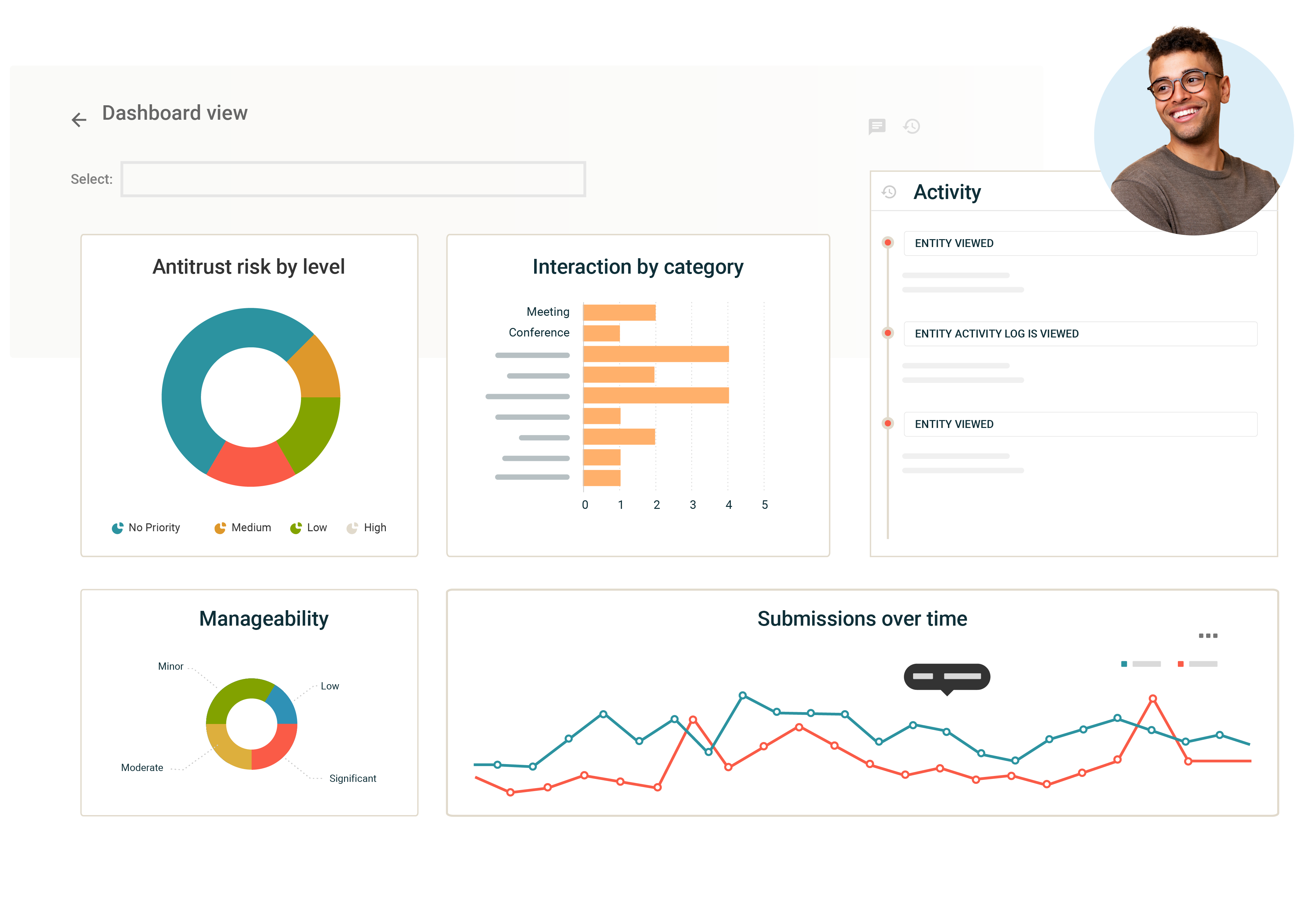Regulations
Compliance Solutions for Bill S-211
Benefit from a centralized, risk-based approach to compliance with Anti-forced Labour and Child Labour Regulations, including the S-211 Act. Gain a thorough understanding of your overall risk posture regarding forced and child labor, and operate with the confidence that you have robust and effective procedures in place.
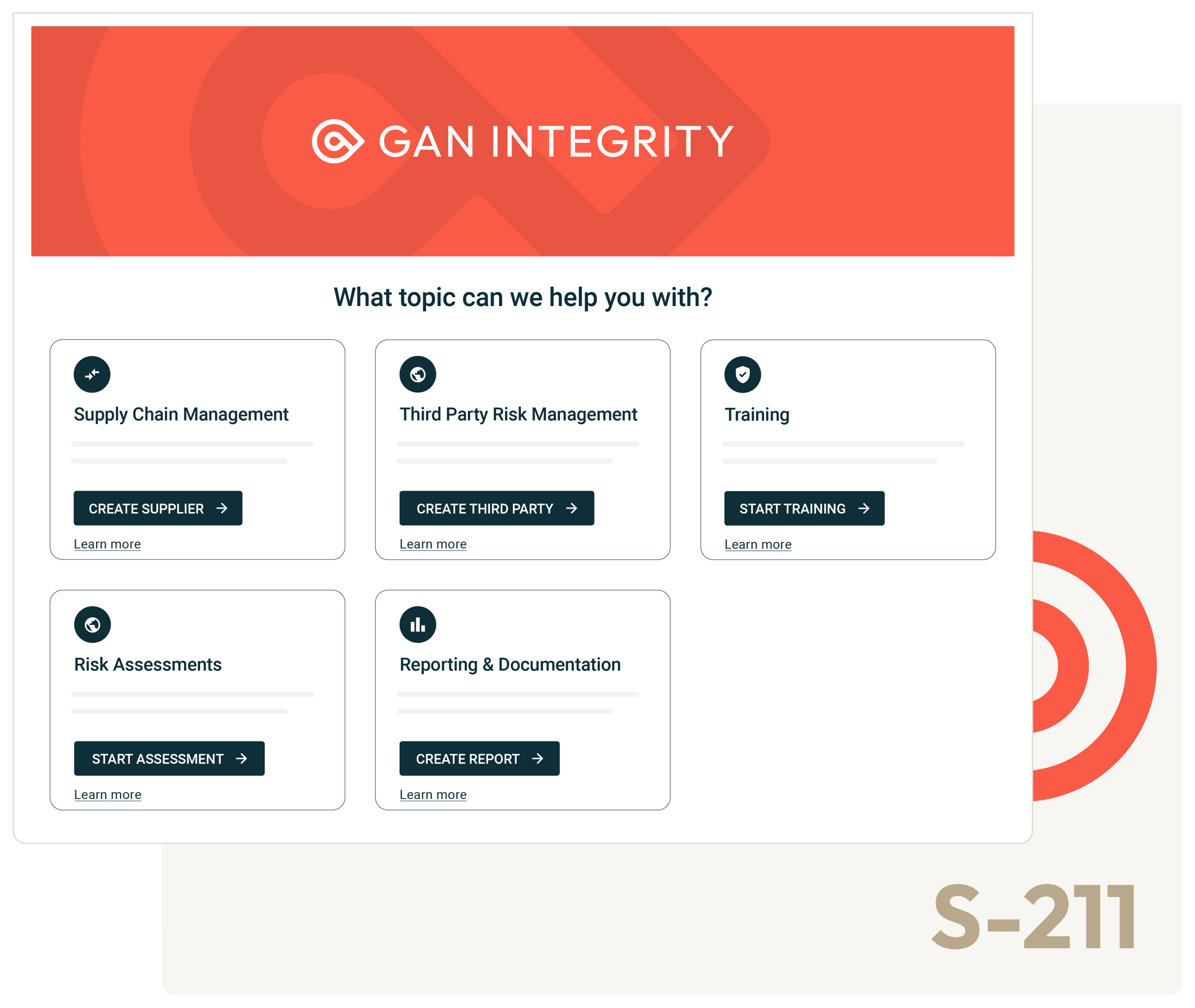
Why GAN Integrity
GAN Integrity is how compliance teams get the tools and expertise to stay ahead of ESG risk. With less effort but more reach, you finally get a better way to do your good work.
See everything – Gain a comprehensive view of your forced and child labor risks in one centralized platform.
Adapt to anything – Utilize a dynamic solution that adapts to regulatory changes and evolves with your program.
Get all the help you need – Receive dedicated support from GAN Integrity’s team of experts.
Understanding the Fighting Against Forced Labour and Child Labour in Supply Chains Act (S-211)
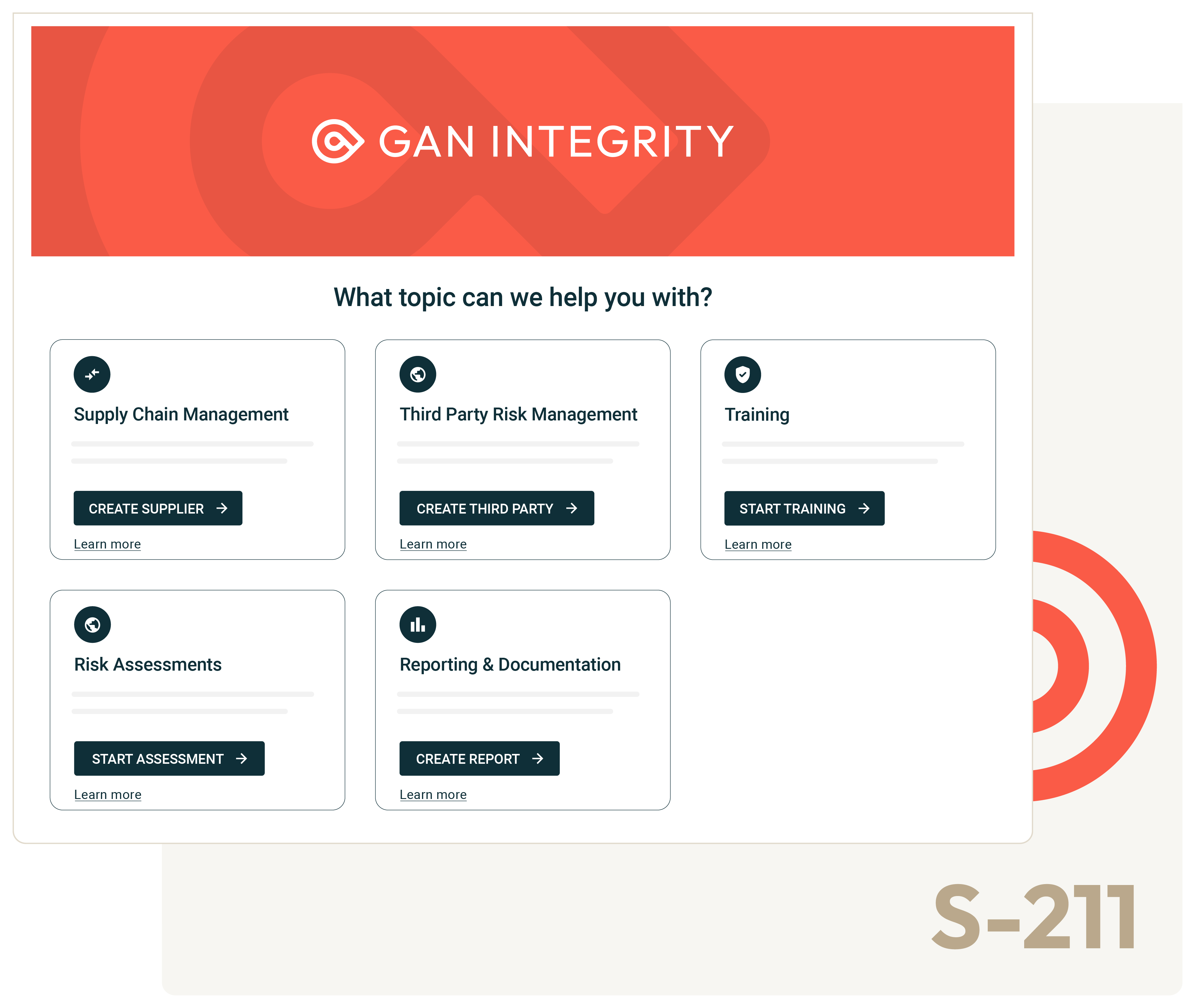
The Fighting Against Forced Labour and Child Labour in Supply Chains Act, also known as S-211, is Canadian legislation aimed at eliminating forced and child labor in supply chains. It requires businesses operating in Canada to disclose the measures they have taken to prevent and address forced and child labor in their operations and supply chains. This report must be submitted annually and is public-facing.
What Constitutes Forced and Child Labour Under S-211?
The Act defines forced labor as any work or service exacted from any person under the menace of any penalty and for which the person has not offered themselves voluntarily. Child labor is defined as the employment of children in a manner that deprives them of their childhood, their potential, and their dignity, and that is harmful to their physical and mental development.
The Importance of Compliance With Bill S-211
Failure to submit the annual report, submitting false or misleading reports, not making reports publicly accessible, obstructing officials, and failing to comply with orders from the Minister of Public Safety and Emergency Preparedness are all considered offenses under Bill S-211.
Entities that fail to comply with the reporting requirements, submit false or misleading information, or obstruct officials can face significant fines, up to $250,000. Directors and officers can also be held personally liable for offenses under the Act.
Implementing an Annual Report
Bill S-211 requires companies to publish an annual report on their efforts to prevent forced and child labor. This report should include:
Organization's Structure: Details of the business and supply chains.
Policies and Due Diligence Processes: Outline policies and steps taken to prevent forced and child labor.
Risk Assessment and Management: Description of identified risks and measures to mitigate them.
Remediation Measures: Actions taken to address and remediate forced and child labor.
Impact on Vulnerable Families: Measures to mitigate income loss for families affected by anti-forced labor actions.
Training: Training provided to employees on forced and child labor.
Effectiveness Assessment: How the entity assesses the effectiveness of its measures to prevent forced and child labor.
The report must be approved by the board of directors and signed by a director, ensuring accountability at the highest level of the organization.
GAN Integrity for Bill S-211 Compliance
GAN Integrity’s platform is designed to support companies in maintaining robust ESG compliance programs, including anti-forced and child labor.
Policy Management
Manage approvals, distribution, and attestation of policies, along with centralized portals for easy access to the latest policies and procedures. Capabilities include:
- Regulatory change management: Identify policies that require updates and timely distribution to employees in response to regulatory changes.
- Automated workflow: Optimize the review and approval process for policies, operating procedures, and work instructions with automated workflows.
- Comprehensive reporting and documentation: Maintain a full audit trail and generate detailed reports to provide clear evidence of compliance to stakeholders and regulators.
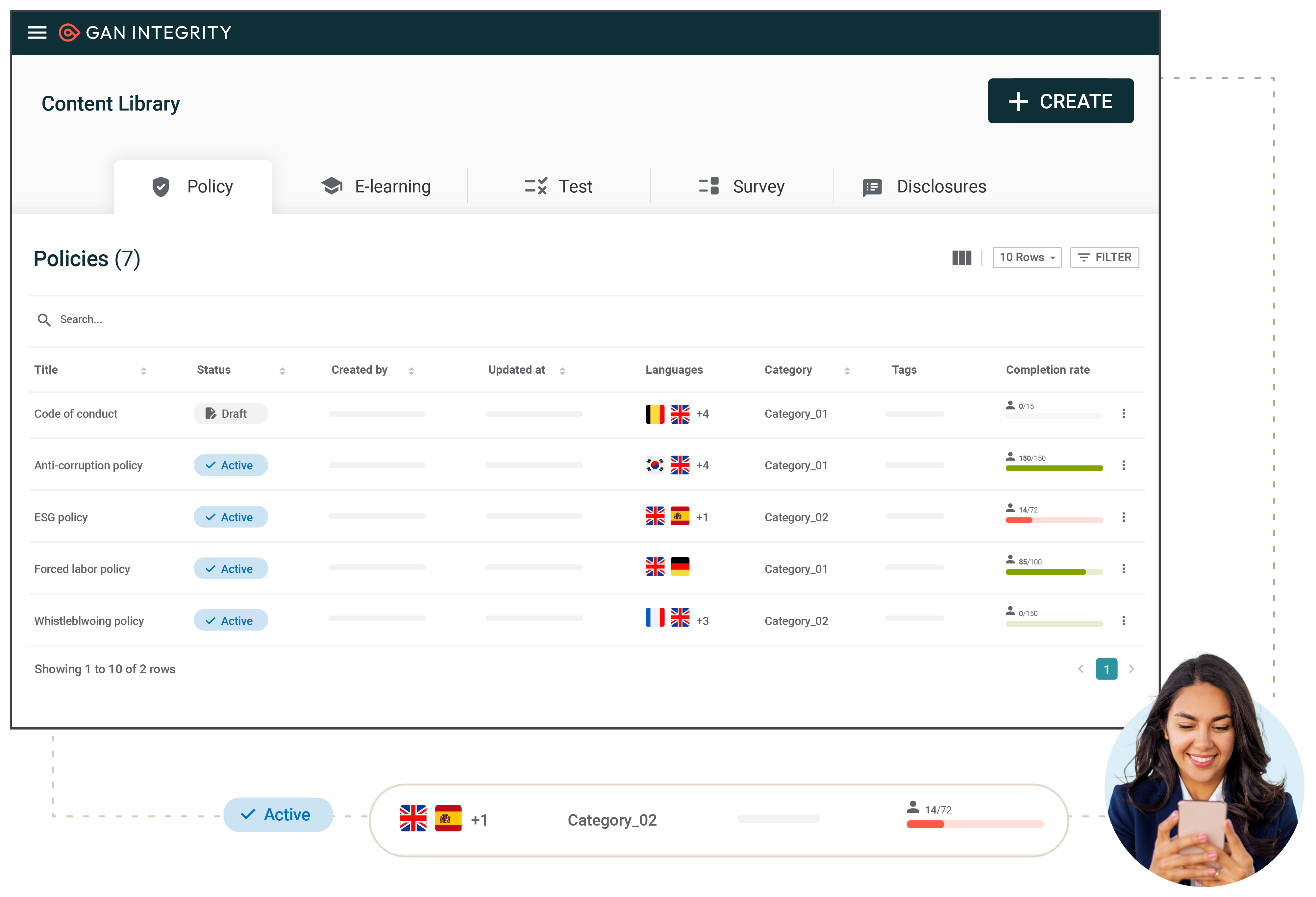
Third-Party Risk Management
Manage risks associated with third parties and assess these against relevant laws and organizational standards. Capabilities include:
- Lifecycle management: Automated workflows for onboarding, risk assessment, issue management, monitoring and off-boarding.
- Integrated due diligence: Initial and ongoing screening of third parties for sanctions, adverse media, forced labor, ESG and more.
- Reporting and analytics: Executive dashboards and reports: Consolidate third party data to identify risks and potential exposure to your organization.
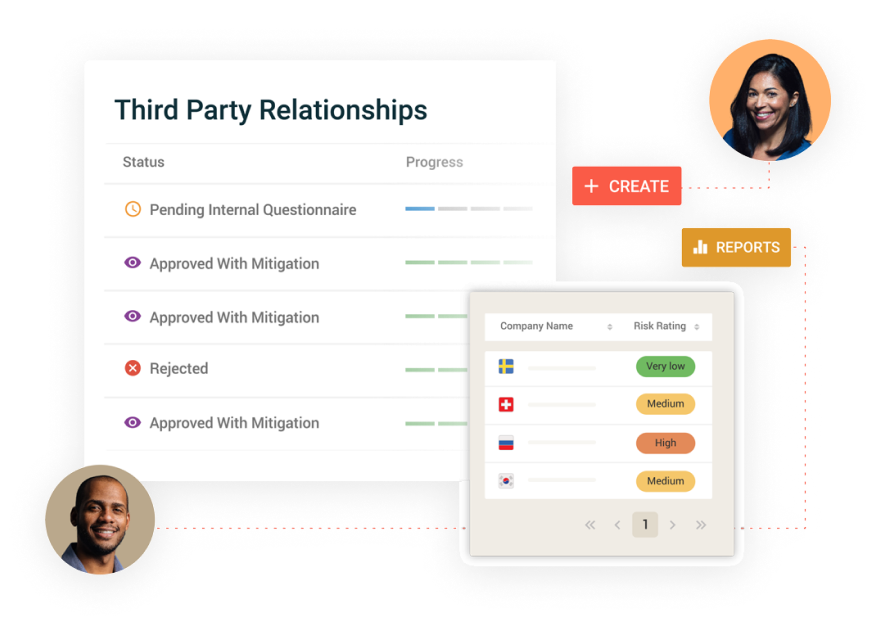
Training
Deliver training and awareness compliance content to employees and key stakeholders. Capabilities include:
- User governance: Automatically enroll new employees in the right programs and seamlessly roll out new training initiatives.
- Embedded reporting and analytics: Customizable dashboards to track program performance and proactively address gaps.
- Risk-based training and communications: Segment employees based on risk profiles to tailor the content and frequency of training and communications.
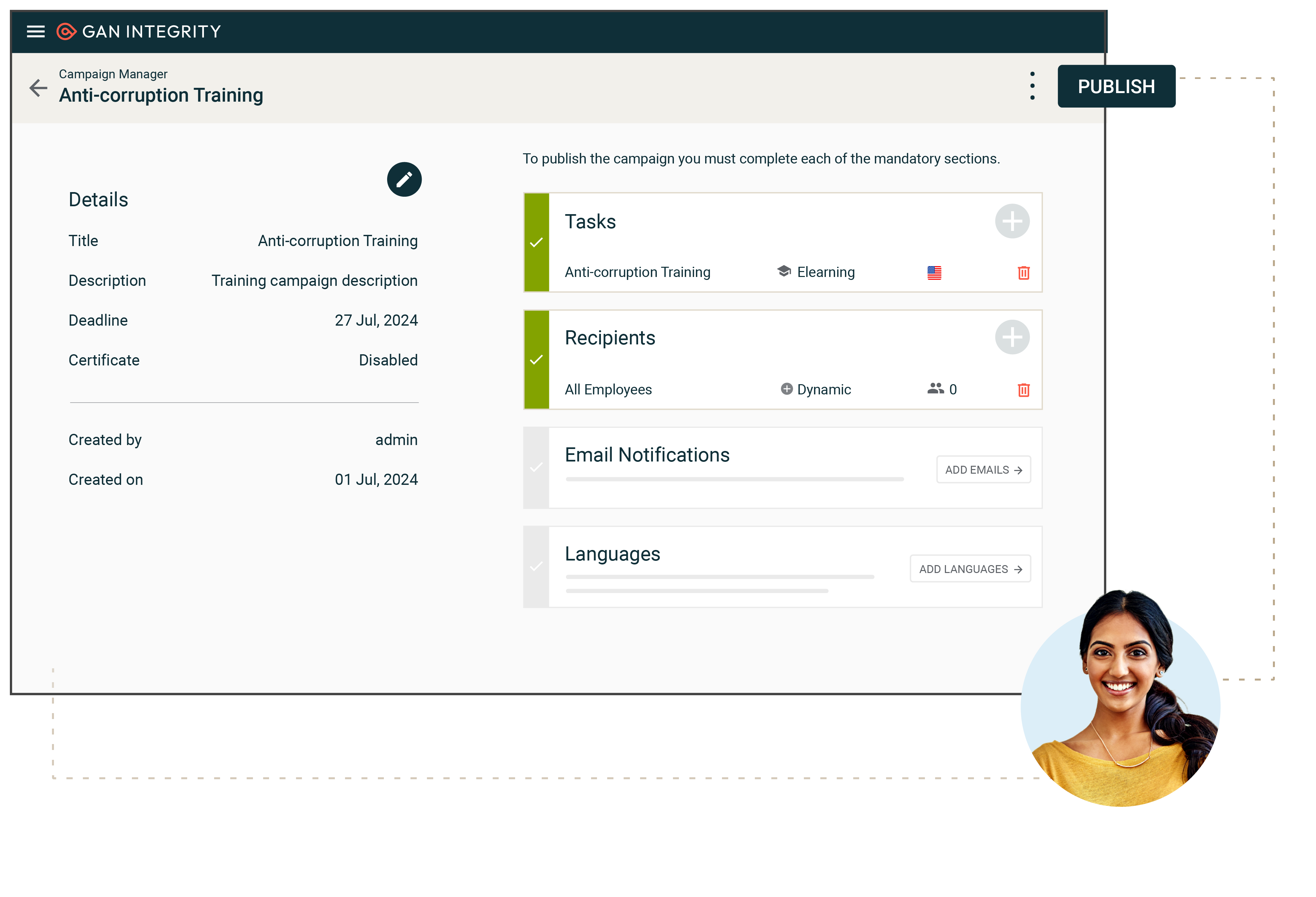
Supply Chain Due Diligence
Enhance supply chain risk management by consolidating processes, identifying and mitigating risks, and integrating data from various risk intelligence and business systems. Capabilities include:
- Automated risk assessments and continuous monitoring: Monitor suppliers continuously for adverse media, sanctions lists, PEP lists, forced labor, and ESG (Environmental, Social, and Governance) issues.
- High-risk supplier identification and management: Identify high-risk suppliers, manage them effectively, and track actions and mitigations to ensure compliance.
- Integrated due diligence assessments: Perform thorough due diligence across your business operations and workflows for seamless integration and enhanced efficiency.
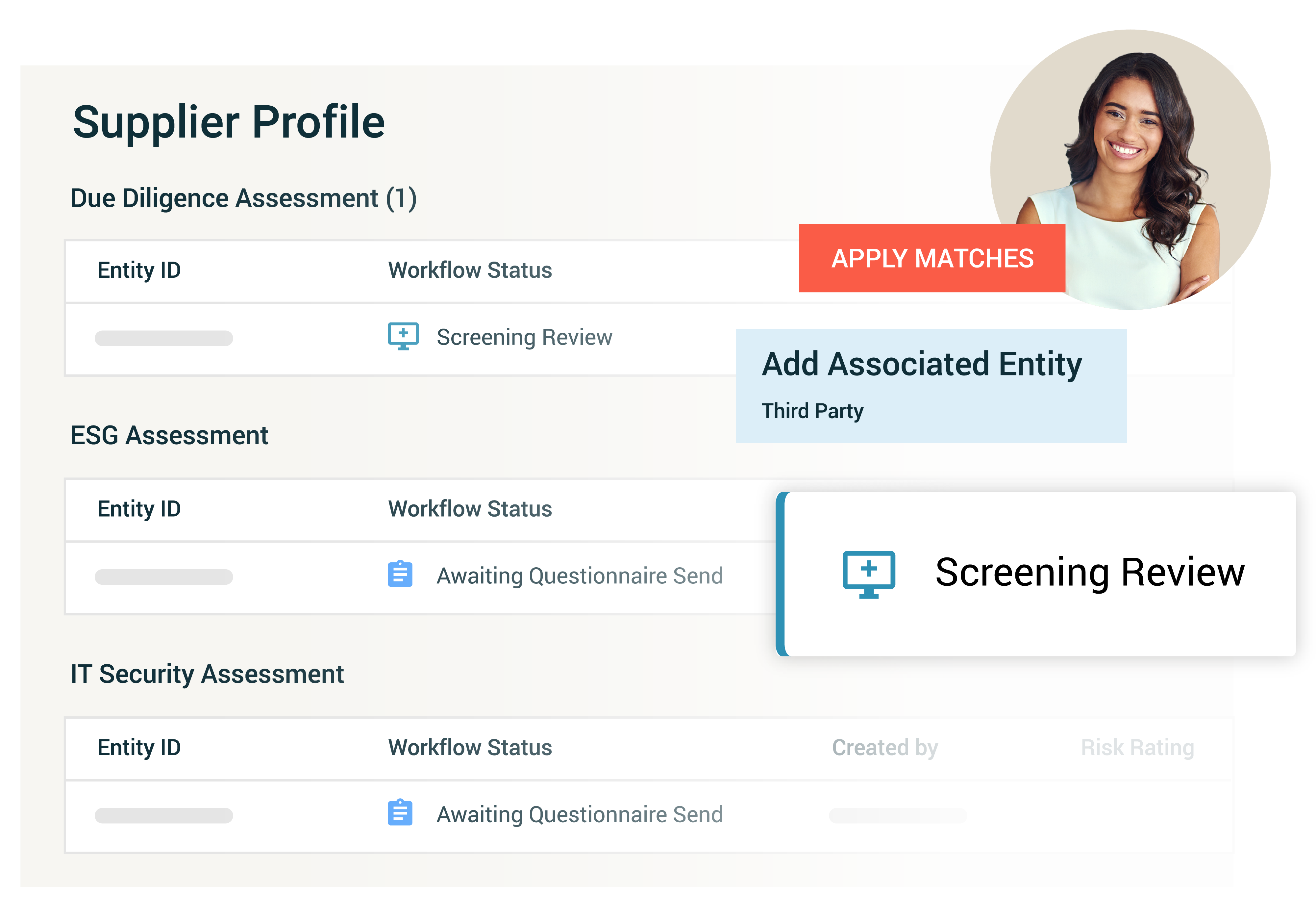
Reporting and Documentation
See everything across your compliance program, and generate reports and dashboards to demonstrate compliance program effectiveness to stakeholders and evidence to regulators. Capabilities include:
- Reporting and analytics: Executive, role-based dashboards to review the effectiveness of your compliance program initiatives.
- Evidence-based compliance: Maintain an auditable trail of all activity with the platform’s integrated and automated audit log.
- Compliance insights: See risk trends and patterns within your program, including third-party and supply chain risk, policies and disclosures.
